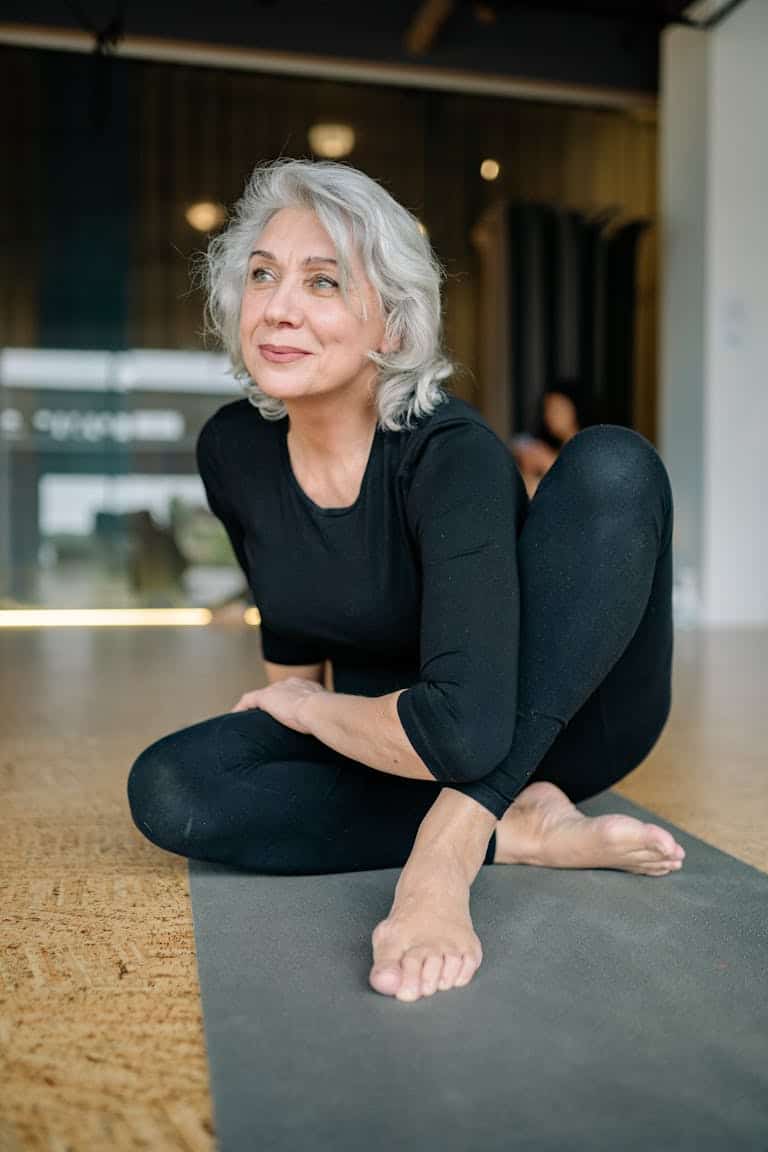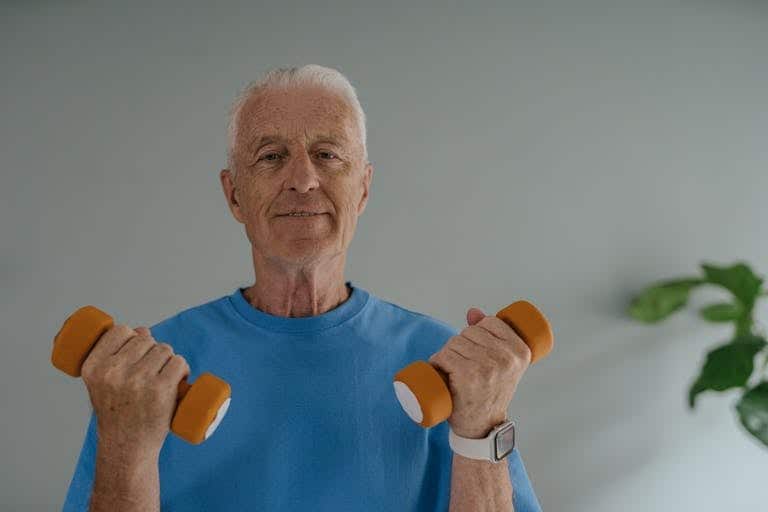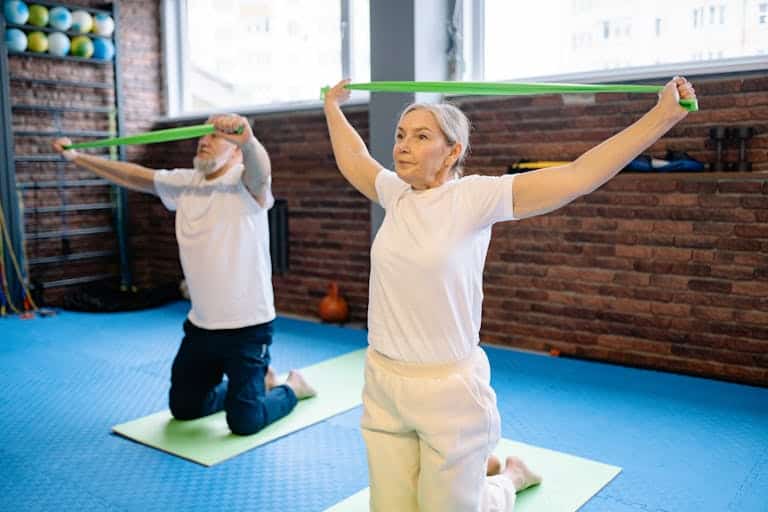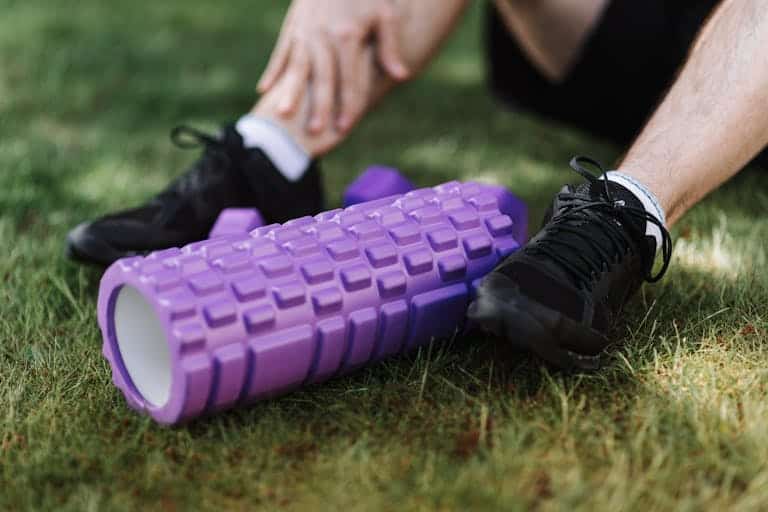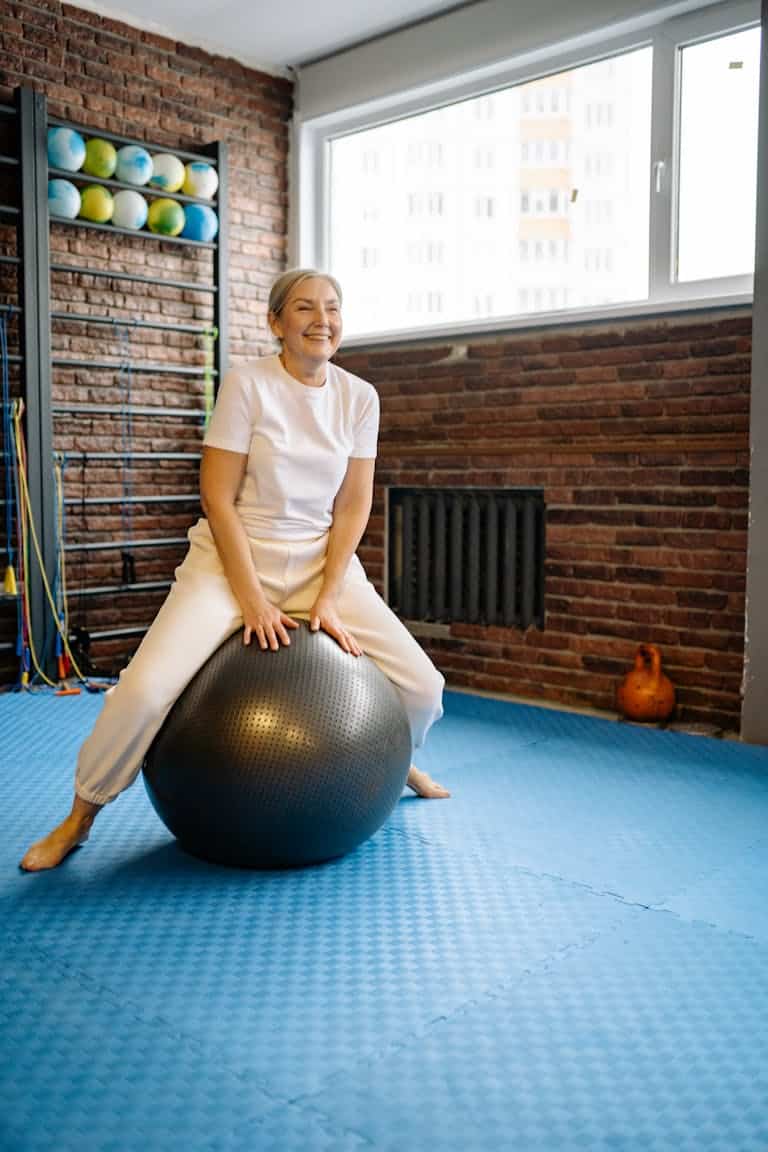Best Warm-Up Exercises for Seniors: Stay Safe & Fit
Disclosure: My rankings are meticulously crafted using advanced algorithms that analyze a vast number of customer reviews, assessing everything from product quality and brand reputation to customer service and popular trends. While these rankings are based on my independent evaluations and intended to serve as a helpful starting point for your shopping journey, it’s worth noting that by purchasing through my recommendations, you’ll access the best prices I’ve found. Additionally, I may earn a commission at no extra cost to you, which supports my ability to continue offering valuable insights.
Introduction
“Age is no barrier. It’s a limitation you put on your mind.”
This powerful quote by renowned athlete Jackie Joyner-Kersee is a testament to the limitless possibilities of maintaining an active lifestyle, especially for seniors. As we age, staying fit and ensuring safety in our physical activities become increasingly important. This is where warm-up exercises come into play—they are not just a step towards fitness but a critical part of nurturing our bodies.
For seniors looking to sustain their health and vitality, warm-up exercises serve as the foundation for any physical activity. They prepare the body by gradually increasing heart rate and improving circulation, thus enhancing overall fitness levels while reducing the risk of injuries. In my blog the Ultimate Guide to Active Aging and Physical Fitness for Seniors, I explain why these exercises are integral for seniors seeking to remain energetic and safe in their fitness journeys.
Backed by research, the importance of a well-rounded warm-up routine cannot be overstated. In fact, a study published in the British Journal of Sports Medicine highlights that regular exercise, including warm-up routines, offers significant benefits in reducing the risk of falls among older adults (Sherrington et al., 2020). For those interested in further enhancing their stability, referring to 10 Powerful Exercises for Seniors to Boost Balance and Coordination is a good next step. Engaging in these precautions and practices ensures that senior adults not only stay active but do so with confidence and ease.
Seniors should pay close attention to their body’s signals. Sudden pain or discomfort is a sign to ease back or modify the activity. Understanding your own body’s feedback is fundamental in ensuring that exercises remain beneficial rather than harmful. As highlighted in a systematic review by Sherrington et al. (2020), regular exercise, including structured warm-ups, plays a crucial role in reducing the risk of falls in older adults, underscoring the importance of mindful exercise execution.
Understanding the Importance of Warm-Ups for Seniors
Warm-up exercises are fundamental for seniors aiming to maintain their health and well-being. Often underestimated, warming up is a crucial component of any fitness routine, particularly for older adults. Engaging in warm-ups helps increase blood flow and enhance flexibility, which is vital for reducing the risk of injury. In fact, “Research published in Aging and Disease shows that warm-up exercises significantly improve muscle strength and fatigue resistance in older adults (Bao et al., 2020).” This implies that seniors can experience better muscle performance during their workouts, leading to more effective and safer exercise sessions.
Among the many benefits of regular warm-ups, one of the most significant is the decreased risk of injuries. As we age, our muscles lose elasticity and strength, making us more susceptible to strains and other injuries. Warm-up exercises help to gradually prepare the body for more intense movements by gently stretching and warming the muscles. This preparation not only enhances physical performance but also serves as a preventive measure against potential workout injuries.
However, it’s crucial to understand the common misconceptions surrounding warm-up exercises for seniors. Many believe these routines require extensive physical labor or might not suit older adults due to perceived fragility. On the contrary, warm-ups should be tailored to each individual’s fitness level and mobility capabilities. The exercises are generally low-impact and focus on gently increasing the heart rate and warming up the body’s various muscles. By dispelling these myths, seniors can confidently incorporate these beneficial exercises into their daily routines, enhancing their overall fitness levels.
By understanding the importance of warm-ups, seniors can take proactive steps toward improving their physical health. This commitment to regular warm-up exercises empowers older adults to lead active, fulfilling lives with minimized physical limitations.

Specific Warm-Up Exercises for Seniors
Engaging in targeted warm-up exercises can lay the foundation for a productive and safe fitness routine for seniors. These exercises are designed to gradually increase heart rate and blood circulation, loosen the joints, and increase muscle elasticity. By adopting a simple set of movements, seniors can effectively prepare their bodies, reduce the risk of injuries, and enhance their overall flexibility and balance. Let’s explore a series of warm-up exercises tailored to meet the needs of seniors.
1. Neck and Shoulder Rolls
Neck and shoulder rolls are gentle yet effective movements that help alleviate stiffness. To begin, sit or stand in a comfortable position. Slowly roll your neck clockwise for a few counts, and then reverse to counterclockwise. Follow with shoulder rolls by lifting the shoulders toward the ears and rolling them back and down in a fluid motion. These exercises enhance neck and shoulder mobility, making daily activities smoother. For those with limited motion, smaller, cautious movements can still provide benefits.
2. Arm Circles
Arm circles are excellent for improving flexibility in the arms and shoulders. Stand with feet hip-width apart, and extend your arms out to the sides. Start with small circles moving forward, gradually increasing their size. Reverse direction every 15 seconds. To maintain balance, engage your core and consider standing near a support structure if necessary.
3. Leg Swings
Leg swings focus on improving hip flexibility and balance. Hold onto a sturdy chair or countertop for support. Gently swing one leg forward and backward, keeping the movement controlled and smooth. Repeat with the other leg. For seniors worried about hip concerns, it’s crucial to only swing as far as comfort allows, avoiding strain.
4. Ankle Circles
To promote ankle mobility and prevent sprains, seated ankle circles are beneficial. Sit comfortably, lift one foot off the ground and rotate it slowly in a circular motion. Switch directions after a few rotations and repeat with the opposite ankle. This exercise can be modified by performing it while standing, provided balance is not compromised.
5. Marching in Place
Marching in place is a dynamic way to boost cardiovascular fitness and joint mobility. Stand tall, lift your knees as high as comfortable, and pump your arms for a more vigorous effect. If stability is a concern, place one hand on a chair or rail. This exercise encourages blood circulation and can be seamlessly integrated with Chair Yoga for Seniors: 7 Simple Poses to Boost Flexibility for a more comprehensive routine.
Through these thoughtfully chosen exercises, seniors can lay a robust groundwork for an active, injury-free lifestyle. Regular practice of these warm-ups contributes significantly to holistic wellbeing, embodying the essence of active aging.
Incorporating Warm-Ups Safely
Warm-ups are essential, but how do we ensure they’re done safely, especially for seniors who might have differing physical limitations? Complimenting our earlier points, incorporating warm-ups safely into a senior fitness routine involves thoughtful planning and cautious progression. It’s crucial to tailor these exercises to fit individual needs, empowering seniors to reap the benefits without risking injury.
1. Start Slowly and Progress Gradually
The primary rule when integrating warm-up exercises is to start slowly. It’s crucial not to dive headfirst into intense activities. Begin with low-intensity movements and progressively increase the intensity as your muscles heat up. This prevents strain or injury, allowing your body time to adjust, ultimately improving your overall workout efficacy.
2. Monitor Body Responses
Seniors should pay close attention to their body’s signals. Sudden pain or discomfort is a sign to ease back or modify the activity. Understanding your own body’s feedback is fundamental in ensuring that exercises remain beneficial rather than harmful. As highlighted in a systematic review by Dyer et al. (2023), exercise interventions play a crucial role in reducing the risk of falls in older adults, underscoring the importance of mindful exercise execution.
3. Use Support When Needed
Incorporating support can be crucial, especially for balance-related warm-ups. Chairs, walls, or even a friend’s steady hand can provide necessary stability. For instance, while doing leg swings or marching in place, using a chair to support balance can prevent falls—a common concern for seniors.
4. Adapt Exercises to Suit Your Abilities
Adapting exercises is key to accessibility. Many warm-up techniques can be modified to accommodate varying levels of mobility and strength. For seniors with limited ankle flexibility, for instance, ankle circles can be performed while seated. Such modifications ensure that everyone, regardless of physical capability, can participate safely. For more guidance on tailoring exercises, consider the resource Safe Stretching for Seniors 50+: Enhance Mobility and Flexibility for follow-up routines.
5. Incorporate Regular Health Check-Ups
Consulting with a healthcare professional before starting new exercise regimes is always advisable. They can provide personal advice that aligns with specific health conditions, ensuring that the warm-up plan complements any medical considerations.
In essence, the goal is to create an enjoyable and risk-free fitness environment where seniors can thrive. By focusing on safety, attentive progression, and listening to your body, these exercises not only become a cornerstone for physical health but also empower a journey towards active aging.
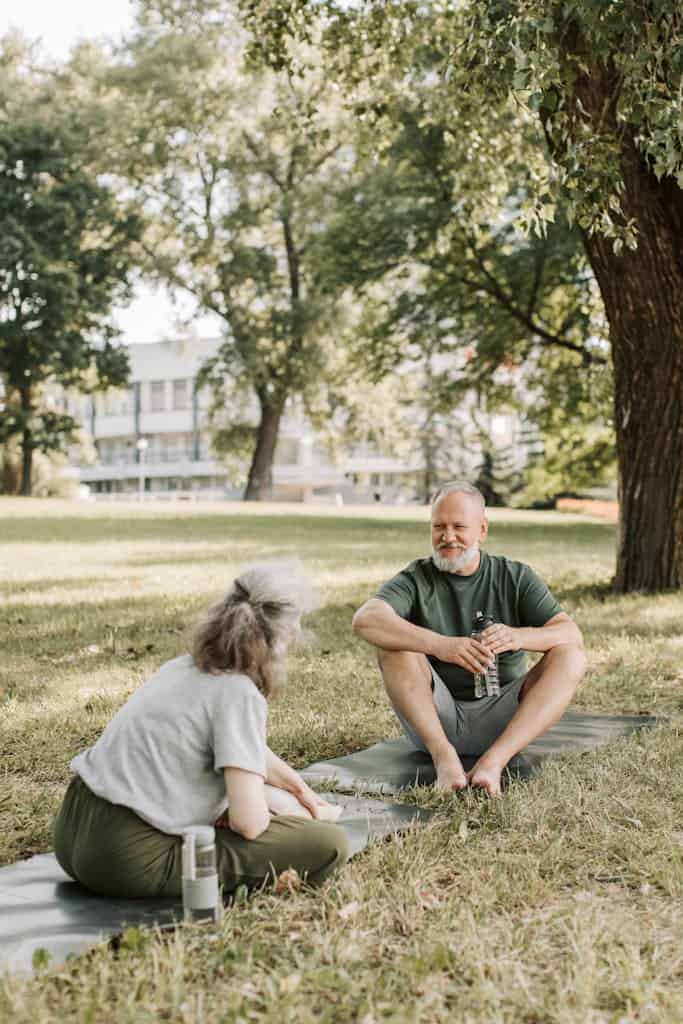
Conclusion
As we wrap up our journey through the world of warm-up exercises for seniors, it’s clear that these simple yet powerful routines are more than just a prelude to physical activity—they’re a cornerstone of safe and effective senior fitness. Remember, as the saying goes,
“Movement is a medicine for creating change in a person’s physical, emotional, and mental states.”
This couldn’t be truer for older adults embarking on their fitness journey.
Throughout this article, we’ve explored the myriad benefits of warm-up exercises tailored specifically for seniors. From enhancing flexibility and improving blood flow to reducing the risk of injuries, these exercises are crucial components of any senior fitness routine. We’ve delved into safe mobility exercises that can be easily incorporated into daily life, ensuring that active aging isn’t just a concept, but a achievable reality for many.
It’s important to remember that warm-up stretches for seniors aren’t just about physical preparation—they’re about mental readiness too. By engaging in these exercises, you’re setting a positive tone for your workout and your day. Whether you’re performing neck rolls, arm circles, or marching in place, each movement is a step towards better health and increased independence.
For those of you eager to take your fitness journey further, I encourage you to explore our How Sleep and Senior Fitness Impact Health After 50: Boost Performance Now! guide. This resource offers valuable insights into how proper rest complements your exercise routine, creating a holistic approach to wellness in your golden years.
As we conclude, I want to leave you with an empowering thought: it’s never too late to start prioritizing your health through exercise. The warm-up routines we’ve discussed are your gateway to a more active lifestyle. Why not try these exercises today? Start small, be consistent, and watch as your body responds positively to these gentle yet effective movements.
Remember, the key to success lies in safety and gradual progression. Listen to your body, celebrate small victories, and don’t hesitate to consult with healthcare professionals when needed. With each warm-up session, you’re not just preparing for exercise—you’re investing in a healthier, more vibrant future.
So, dear readers, I encourage you to embrace these warm-up exercises as part of your daily routine. Let them be the first step in your journey towards improved mobility, enhanced balance, and overall better quality of life. Here’s to your health, your fitness, and the exciting path of active aging that lies ahead!
References
1. Sherrington, C., Fairhall, N. J., Wallbank, G. K., Tiedemann, A., Michaleff, Z. A., Howard, K., Clemson, L., Hopewell, S., & Lamb, S. E. (2020). Exercise and fall prevention in older adults: A systematic review. British Journal of Sports Medicine, 54(10), 598-603. https://doi.org/10.1136/bjsports-2019-101512
2. Bao, W., Sun, Y., Zhang, T., Zou, L., Wu, X., Wang, D., & Chen, Z. (2020). Warm-up exercises and their effects on muscle strength and fatigue resistance in older adults: A systematic review and meta-analysis. Aging and Disease, 11(4), 863–873. https://doi.org/10.14336/AD.2019.1012
3. Dyer, S. M., Suen, J., Kwok, W. S., Dawson, R., McLennan, C., Cameron, I. D., Hill, K. D., & Sherrington, C. (2023). Exercise for falls prevention in aged care: systematic review and trial endpoint meta-analyses. Age and Ageing, 52(12), Article afad217. https://doi.org/10.1093/ageing/afad217


